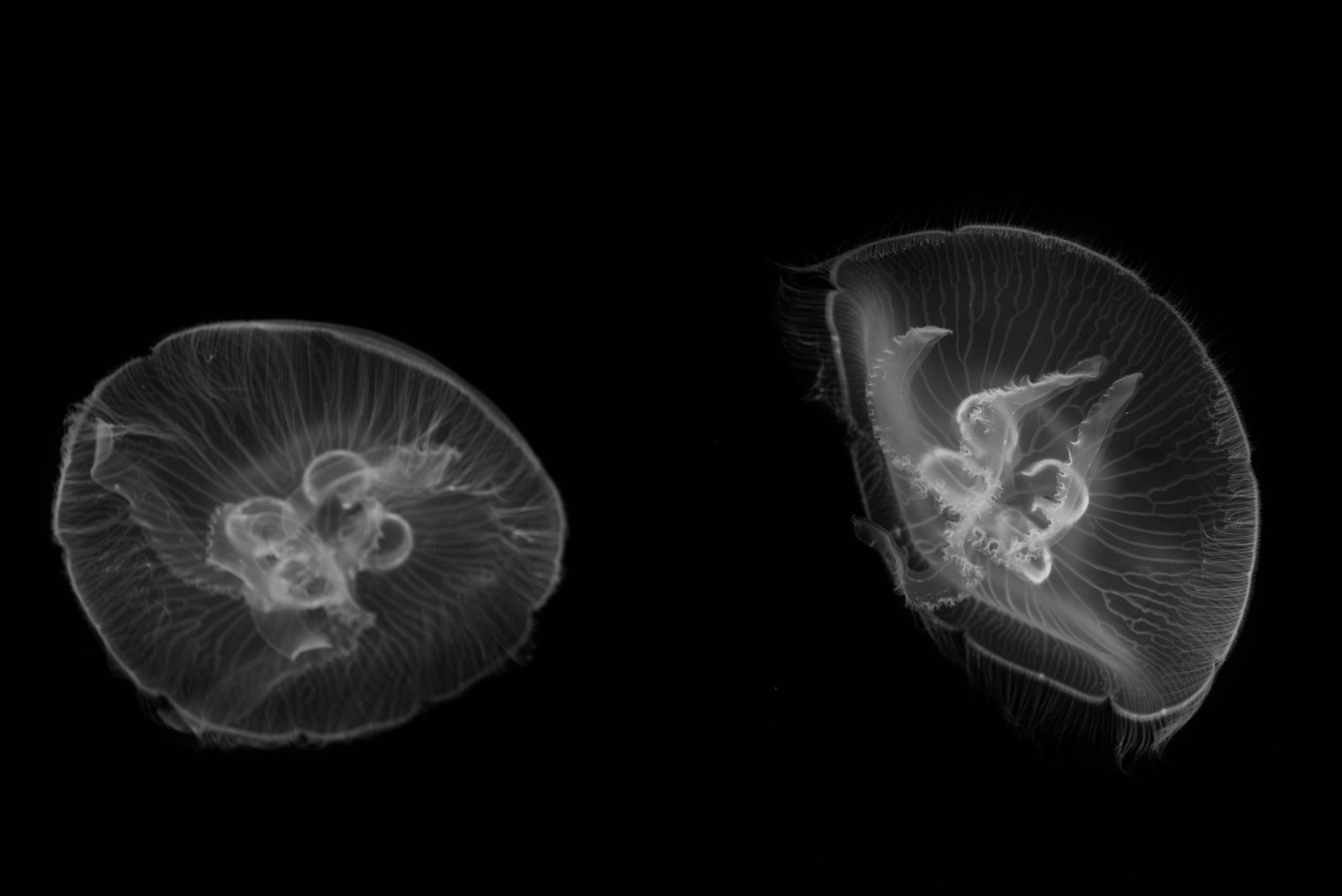Frequently Asked Questions
What is the lifespan of the moon jellyfish?
Moon Jellyfish live up to a year on average in an enclosed, temperature controlled system, although with immaculate care they can live up to an additional year. In the wild, the moon jellyfish typically live anywhere from 3-6 months. Juveniles are produced from polyps in the spring and adults grow throughout the summer. By the end of the summer male and female jellyfish mate and produce polyps, which grow and divide throughout the winter. The polyps start producing juveniles and the cycle repeats in the spring. This means the swimming medusa life stage of jellyfish is only around for a few months during the summer. Jellyfish have delicate tissue, so they are usually damaged by the end of summer and most of them die. In captivity, it's very unlikely for the jellyfish to reproduce, although it is possible, and the adult jellyfish live up to a year on average. There is actually an "immortal" species of jellyfish that was only discovered a few years ago. It is the only animal known to be able to go backwards in its lifecycle and revert back to a larval stage.
What do you feed the moon jellyfish?
Jellyfish Art provides a Dry Jellyfish Food specifically formulated for jellyfish made from plankton high in HUFAs (Highly Unsaturated Fatty Acids), which are essential for proper nutrition. We strongly suggest only feeding jellyfish with our recommended food. Other fish foods that claim to be suitable for jellyfish are often low quality. Follow the feeding guide to properly feed your jellyfish with special care not to overfeed which can cause water quality issues.
How often should you feed jellyfish?
We recommend feeding your jellyfish 1/4 scoop of dry jelly food at least once a day.
Where do the jellyfish come from?
Jellyfish Art jellies are 100% farm raised in our aquaculture facility. Our highly trained staff performs around the clock care, ensuring our jellies are happy and health before going to their forever homes.
How big do the jellyfish get?
Typically jellyfish will grow to the size of their aquarium. For our Jellyfish cylinders, the jellies will typically grow to about 2-3 inches in diameter, However in larger displays and with optimal care, the jellyfish can get up to 5+ inches.
Can moon jellyfish sting?
Technically moon jellyfish can sting, however their sting has very little effect on humans since their sting generally can't penetrate human skin.
What do I do if a bubble gets trapped under my jellyfish?
Given that jellyfish are composed of 95% water, they are highly delicate creatures. While a single air bubble may not pose a significant threat, trapped air bubbles within the jellyfish's bell can ultimately escape by causing a rupture. Should any air bubbles become trapped under the jellyfish, gently invert it using a spoon or your hand, taking care not to damage its fragile tissue. Sometimes just flipping over the jelly will allow the bubble to surface, however if the air bubble does not come out you may fully submerge a turkey baster, ensuring that all air is expelled, and use the water to flush out the bubbles.
How do I redeem my jellyfish code?
Your Jellyfish Redemption code is sent via email upon your original Jellyfish Kit purchase. Please review our Shipping Schedule prior to ordering your Jellyfish.
Is there international shipping?
We do not ship LIVE jellyfish to: Hawaii, Alaska, PO Boxes, Puerto Rico, or other countries. Please see our international orders page for more details.
Where can I purchase my Reverse Osmosis or Distilled water? Grocery/Superstores/Pharmacy (Walmart, Target, Walgreens, CVS, etc.) Note: If you are unsure about your source of water, contact us! We are happy to help.
Where can I find the Instruction Manual for my kit?
Jellyfish Nano Aquarium - Instruction Manual
Jellyfish Cylinder 5 Aquarium - Instruction Manual
How many Jellyfish can I put in my aquarium?
Jelly Cylinder 5: We do not recommend having more than 5-6 Jellyfish in the Jelly Cylinder 5 (5 gallon) as the water parameters may be difficult to control. More Animals = Higher Nitrates = More water changes required.
Jelly Cylinder NANO: We do not recommend having more than 3 Jellyfish in the Jelly Cylinder NANO (2 gallon) as the water parameters may be difficult to control. More Animals = Higher Nitrates = More water changes required.





